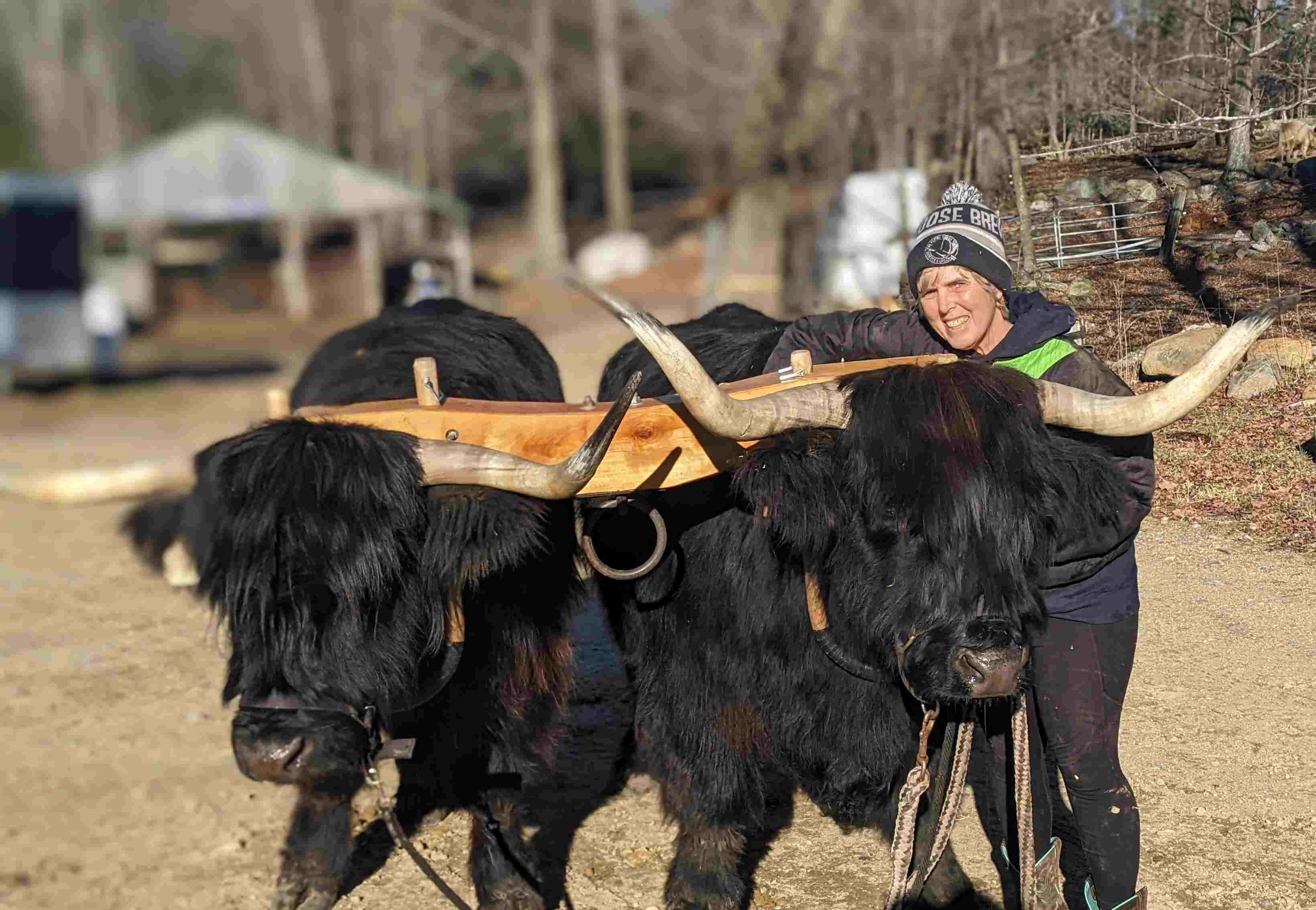Was an Old Teamster Pulling My Leg?
posted on
April 11, 2021

Belle, a 3-year-old Milking Shorthorn heifer, and Flora, Carole’s 14-week-old puppy, both made a debut at the Miles Smith Farm fundraising event for the farm’s non-profit Learning Barn.
In a previous column, I wrote that farmers call steers "bulls." I got an email from Art Pease, a fellow farmer, who called me out on it. He said, "No, no, no! Farmers do not call steers bulls! Steers are steers, and bulls are bulls, as you must know. Perhaps the newspaper wrote the photo caption in today's column?" Art also said, "My father and older brothers always called them steers or oxen. I certainly wouldn't want to try to use a yoke of bulls!" and sent me photos of his family and their oxen. Art wasn't the only one who felt this was a mistake.
A Mistake?
No, Art, that was not a mistake by the newspaper. It was me, all me.
Why did I do it? When I started competing at fairs with my ox team, I was confused when other teamsters called their oxen "bulls." When asked, an old-time teamster told me that "bull" was slang for steers. I assumed that was universal, so I added that to my growing store of cattle knowledge. Was this inside-teamster-slang or a little joke among a particular group of teamsters, or was just an old-timer pulling my leg? Maybe some teamsters who read this will help and send their opinions.
Farm Tour Update
Meanwhile, I'd like to report on the April 3rd "Farmyard Tours" to benefit the Learning Barn project. More than 67 people made appointments to cuddle a cow, set their children on the back of mighty Curious Bleu, or hug a heifer (a young female cow). Even though everyone wore masks, the pandemic was not front and center for a few brief moments. Not because of social distancing or constant sanitizing, but because gale-force winds carried the virus (and a pop-up tent) far away. Topper, my 9-year-old ox, was slated to be the "picture steer," so I tethered him to a 1,000-pound hay bale. But the flapping decorations spooked him, and he ran off, dragging the bale across the yard. He was too skittish to trust near visitors, so we replaced him with Rain, a 2-year-old heifer. Rain was a perfect candidate; she didn't mind the wind and stood patiently for pictures, some brushing, and the occasional carrot during the event.
Belle's Debut
This was Rain's debut, and she was joined by a cow named Belle, another first-timer. Belle, a Milking Shorthorn, came to the farm a few years ago. As a day-old twin calf, a human had bottle-fed milk to her, brushed her, and told her every day what a special calf she was. As a result, Belle bonded with humans, but not cows. She would follow me around the barnyard like a lonely puppy and search out back and neck scratches. She might have thought she had more in common with people, but the other cows saw her as a "little different." They chased her in circles around the field until, scared and tired, she busted through the electric fence to escape back to her human herd. She was small, so for that first year, we housed her with the donkey, goats, and sheep, who accepted her un-animal-like behavior.
What is a Freemartin?
Belle was a twin, and since her sibling was a male, she is sterile. Called a "freemartin," a female fetus exposed to male hormones in the womb causes the suppression of the reproductive tract. Because she cannot produce calves, Belle’s farm job is a therapy or ambassador cow.
As she got older, Belle finally found her cowness and is currently pastured with the other cows, where she head butts and pushes them just like they used to do to her. She still relates well with people, which is why she made her debut at Farmyard Tour Day, where she enjoyed getting brushed and eating carrots. Farm friend Trish Taylor has been training her to pull a cart, so who knows, she might give you a ride in a cart someday. But don't worry; under no circumstances will I ever call her a bull.



